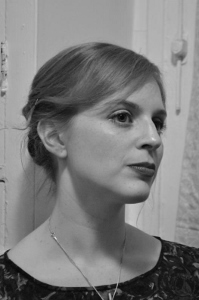
Hesitation and the Poetic Metaphor
Contributor’s Marginalia: Brianna Noll on “The Cloudmaker’s Key” by Kai Carlson Wee
There’s something about a metaphor, a good metaphor, that hooks me every time. I think it’s because in a metaphor, we see the writer’s artistry: a certain conception of reality is reframed by unbridled imagination. Faces in a crowded station become “petals on a wet, black bough.” If what the metaphor does with language could be reproduced in the world of experience, we might call it magic.
But what I love more is when the clear distinction between the literal and the figurative breaks down. The poem presents something, and you can’t quite tell if it’s literal, or true, or plausible. You could see this, for example, in Brigit Pegeen Kelly’s poem “Song,” which begins:
Listen: there was a goat’s head hanging by ropes in a tree.
All night it hung there and sang. And those who heard it
Felt a hurt in their hearts and thought they were hearing
The song of a night bird.
Certainly, we could read this either literally or figuratively. If literal, it marks a kind of magical world, one where a severed goat’s head is capable of singing. But even if you were to read this purely as a metaphor, the poem resists a clear interpretation. Is the singing goat head a figure for grief? For guilt? Does it recall the etymology of tragedy: “goat song”? It can be any or all of these. Kelly’s poem not only breaks down the divide between literal and figurative, it resists a singular interpretation of what this magical image might mean. This is what makes “Song” one of my most favorite poems, and it is the feature that draws me, again and again, to Kai Carlson-Wee’s “The Cloudmaker’s Key.”
I like to use Todorov’s term hesitation to talk about this effect that metaphors can have when the literal blurs into the figurative, even though Todorov assigns hesitation to the fantastic, and he limits the fantastic to prose fiction. Todorov imagines the reader faced with a supernatural occurrence in the text; unsure whether this has a real-world explanation, the reader hesitates—is this uncanny (explicable) or marvelous (otherworldly)? I imagine the reader faced with a metaphor that might also be read literally, creating what the Russian Formalists called a realized metaphor. This reader hesitates, too, because the trope requires us to consider both readings; it’s neither one nor the other.
Carlson-Wee’s poem makes me hesitate because it poses a metaphor, then attempts to explain that metaphor in such varied ways that what looks like explanation proves actually to be a kind of evasion; the explanations expand and expand, making a single, clear interpretation impossible. Further, it becomes unclear whether these explanations are plausible literal readings for the metaphor, or if they become figures themselves.
I don’t want to give it all away because the poem is brilliant and you should read it. But I will say this: The central metaphor is spoken not by the speaker, but by another man (perhaps the Cloudmaker of the title), and the speaker’s explanations work to characterize that man. In so doing, he becomes almost mythical, the characterization almost unbelievable. But that’s the key: it’s almost unbelievable. You hesitate. You even begin to think that the speaker hesitates because the poem uses three different kinds of anaphora, as though the speaker’s stuck, revising and re-revising, trying to distinguish truth from fiction.
I’ll tell you one more thing: the metaphor is about life. Isn’t that perfect? Aren’t we always grasping at meaning, hesitating, unsure what’s real and what’s imagined?
